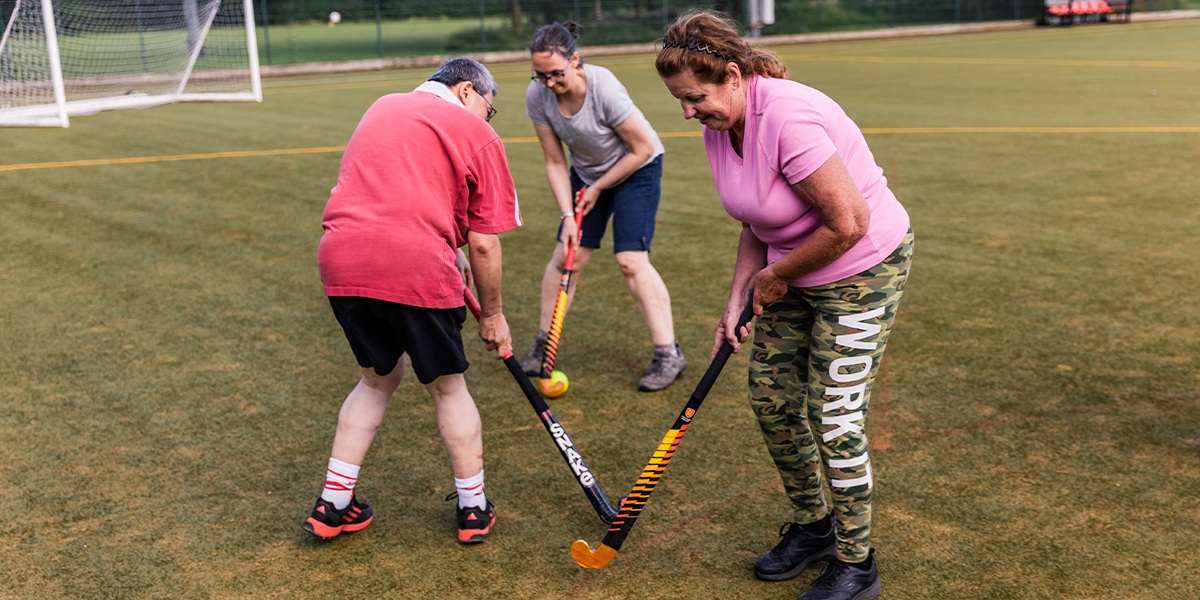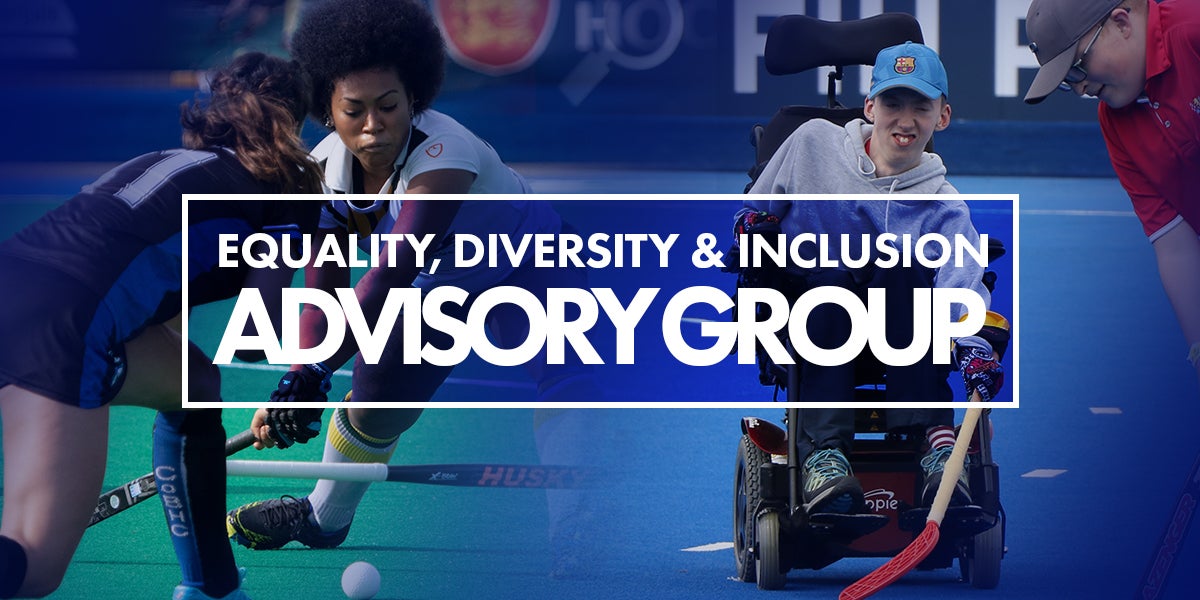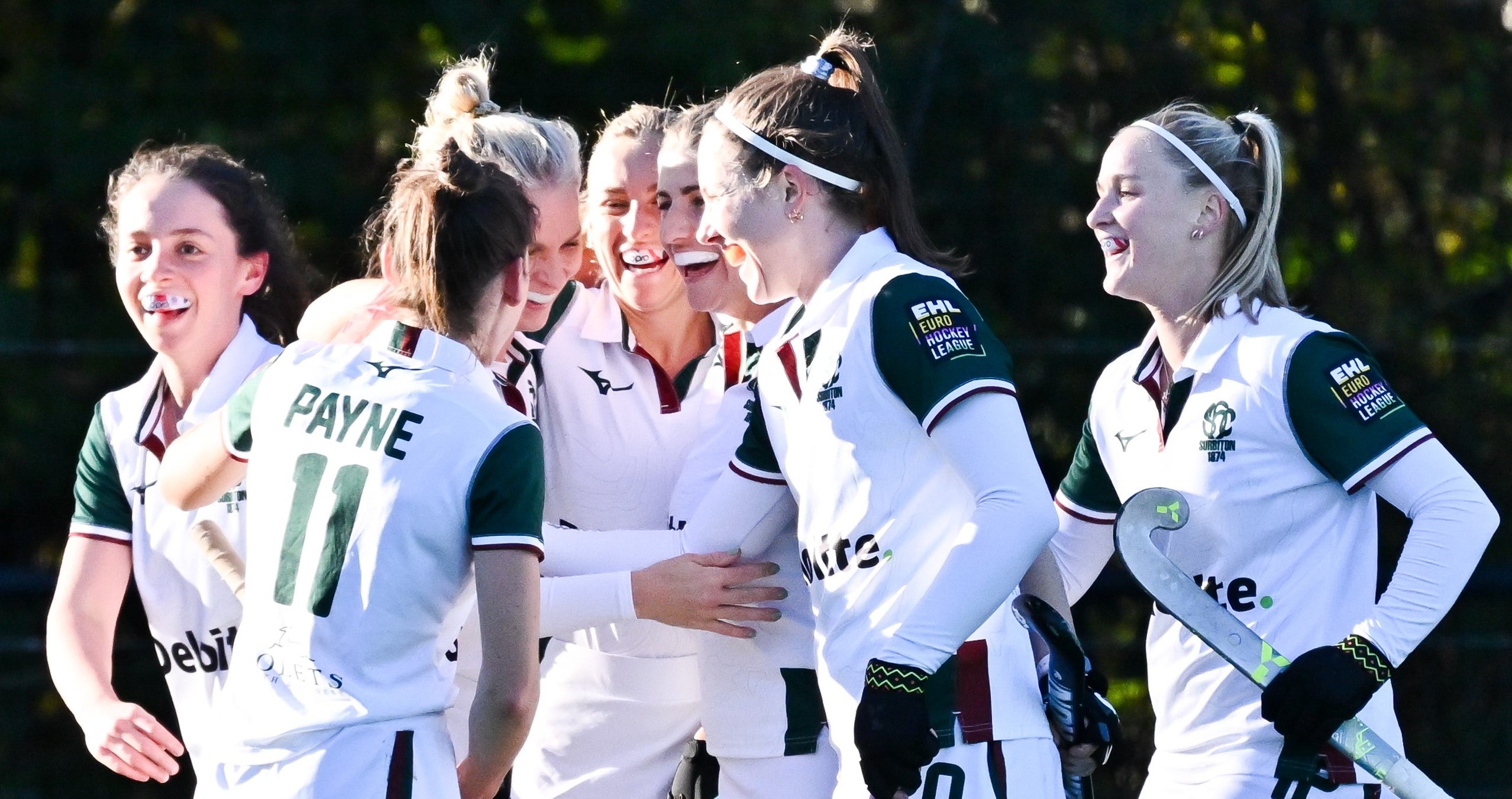At England Hockey, the safety and well-being of everyone in our hockey community is at the heart of what we do. This Safety FAQ has been created to provide practical guidance and answers on a range of essential topics, ensuring our sport remains safe, inclusive, and enjoyable for all.
If you have any further questions which are not answered, please email health.safety@englandhockey.co.uk
Contact
-
Please contact England Hockey on health.safety@englandhockey.co.uk
-
Please contact England Hockey on health.safety@englandhockey.co.uk
First Aid
-
England hockey does not have a requirement for first aid certification for Coaching/Umpiring qualifications. However, England Hockey does recommend a minimum of one First Aid trained person per match or training session and each club should assess their own need for First Aid provision.
-
As a minimum we recommend undertaking an Emergency First Aid course which lasts a minimum of three hours and includes practical CPR. You can find reputable local first aid training providers, or training from Volunteer Aid Societies such as St John’s Ambulance or British Red Cross (training).
-
UK Coaching, in collaboration with Resuscitation Council UK, St John Ambulance and Joe Humphies Memorial Trust, have produced a free e-learning course around how to prepare for and what to do in the case of someone having a sudden cardiac arrest. The course is around 30 minutes long and can be completed by anyone regardless of previous medical experience. To access this course, please click here.
Insurance
-
England Hockey have combined affiliation with insurance, which means your insurance is automatically included when you affiliate to England Hockey via Membership+. You can find more information about Membership+ coverage on the Marsh Sport England Hockey Insurance Zone here https://www.marshsport.co.uk/england-hockey/clubs
-
Cover is included for players, members, umpires, coaches, helpers, volunteers and employees while representing/ acting on behalf of your Hockey club. Select here for more information on Membership+ insurance coverage.
-
England Hockey have made it a requirement that clubs arrange suitable liability insurance and personal accident cover to protect themselves and their members against potential exposures – including serious injury. If your Club has signed up for England Hockey’s Membership+ affiliation you will have personal accident insurance through Marsh Sport.
-
England Hockey recommends all coaches are insured through individual insurance or a Clubs/Associations insurance. To find out more about the coaching membership scheme, including insurance cover, click here
Unqualified coaches can still access insurance, via England Hockey, if they are NOT delivering entirely independently (e.g. they are not by themselves with no support framework around their delivery), have accessed a relevant England Hockey CPD workshop (Safe Hockey) and have completed approved safeguarding training and hold a valid DBS check.
Clubs/Associations should always check with their insurance provider that they do not have specific reference to qualifications (as a minority of providers do).
INJURY
-
England Hockey requires the use of the SportSmart platform to report injuries.
SportSmart should be used by all England Hockey members (e.g. Clubs and Association) to record injuries sustained by ANY player:
- Who is removed from the field of play as a result of injury;
- Who reports an injury immediately after the session (after changing etc);
- Who reports an injury, sustained in hockey, that prevents them taking part in other activities (i.e. if a player contacts the coach or club captain to tell them a niggle/ injury has now stopped them doing other sport or activity).
In the event of an accident or injury during hockey activity (competition or training) the procedure should be followed by the club or organisation
- Seek medical help if required (emergency services, 111 or GP);
- Record details of the injury within SportSmart, as soon as practicable;
- For players under 18 years, contact parents or guardians (this process can be managed within SportSmart).
England Hockey’s Injury Reporting Policy can be found
-
The SportSmart platform is a GDPR compliant web and mobile enabled tool designed to make it quick and easy for members to record injuries.
The SportSmart platform includes tools, educational information, and insights to prevent, monitor and manage injury. Using the SportSmart platform, clubs and associations can:• log injuries easily, record an A&E or practitioner visit or if a player was withdrawn due to injury;
• respond quickly to potential concussion with its online Head Injury Assessment tool;
• manage return to play and therefore reduce the risk of further injury;
• build dashboard reports of incident and session data to improve understanding across the team and ongoing injury management;
• be used as the club/association’s accident reporting process (as required by H&S guidelines).
The SportSmart platform will only retain personal data while you remain actively engaged with the platform, or if you give consent to hold it for another purpose. Personal data will be deleted, or anonymised so that it is no longer personally identifiable data, 3 years after the individuals last activity on the SportSmart platform.
If your Club/Association has not yet signed up to the SportSmart platform you can find out more information here.
-
Concussion is a brain injury caused by a blow to the head or body which leads to shaking of the brain.
• Concussion results in a disturbance in brain function that can affect a child or young person’s thinking, memory, mood, behaviour, level of consciousness, as well as producing physical symptoms such as headache and dizziness
• Concussion usually occurs without loss of consciousness
• Most concussions recover with physical and mental rest
For more information, please view our guidance and policy here -
If you have been concussed, or a suspected concussion, you should be IMMEDIATELY REMOVED FROM PLAY.
All cases of concussion and suspected concussion must be given time to recover - rest the body (e.g. avoid sports, running, cycling, swimming and weight training) and rest the brain (e.g. avoid reading, television, computer, video games and social media) until symptom free.Children and young people (under 18) must rest from training and matches for a minimum of 14 days unless cleared to do so by a doctor specialising in concussion assessment and management. See England Hockey’s Concussion Guidance here
-
Concussion must be taken extremely seriously to safeguard the long-term welfare of players: Remember…. IF IN DOUBT, SIT THEM OUT.
RECOVER All cases of concussion and suspected concussion must be given time to recover - rest the body (e.g. avoid sports, running, cycling, swimming and weight training) and rest the brain (e.g. avoid reading, television, computer, video games and social media) until symptom free. Children and young people (under 18) must rest from training and matches for a minimum of 14 days unless cleared to do so by a doctor specialising in concussion assessment and management.
For Players 18 years of age and over:
• Once the player is entirely symptom free then they should follow a Graduated Return To Play (GRTP) protocol. This should be done under the guidance of a Doctor or Physiotherapist familiar with the protocol
• Players that fail to progress through the GRTP because symptoms return should be referred for further medical review
• Players who complete a GRTP must receive medical clearance from a doctor or an approved healthcare professional before returning to play
For Players Under 18:
Concussion and participation in sport:
• Following the 14 day rest period, if entirely symptom free, they should then follow a Graduated Return To Play (GRTP) protocol under the guidance of a Doctor or Physiotherapist familiar with the protocol
• It is recommended that every child or young person is assessed by a doctor before returning to play. Ideally, that doctor should be one with expertise in managing concussion
• Children and young people that fail to progress through the GRTP because symptoms return should be referred for further medical review
Safety In Hockey
-
Regardless of the activity taking place, whether in a game or training, creating a safe environment for everyone involved in hockey is essential.
England Hockey strongly recommends that all clubs/ organisations and their members take the time to read and digest the policies and guidance. It is the responsibility of everyone within the sport to create a safe environment for all who participate.
-
Please utilise the Planning Safe Hockey webpage, for all documents.
-
England Hockey has released a Safe Hockey Online Module on Hockey Hub. It aims to provide some guidance and ideas on how to deliver fun, safe and engaging sessions, and how we can put the very best practice, policies and procedures in place to make sure that our sport is as safe as it possibly can be
-
It is essential when working with young people to ensure appropriate supervision ratios of adults to young people. Clubs may also benefit from having a greater number of ‘helpers’ to support coaches at hockey sessions. England Hockey recommends the following supervision ratios: Under 8’s: 1 adult: 8 children (with a minimum of 2 adults) Over 8’s: 1 adult: 12 children (with a minimum of 2 adults) Over 18’s: 1:16
It is recommended to complete the Safe in Hockey Module -
Risk assessments are an excellent way to identify and overcome health and safety problems. Risk assessment involves identifying all hazards, assessing the risk and putting in places measures to control unacceptable risks. E.g. equipment left in a walkway
Please utilise the Planning Safe Hockey webpage, for Risk Assessment templates and examples. -
A risk assessment is an important step in protecting everyone who is affected by your Club's activities, including players, spectators, coaches, volunteers and officials. Risk Assessments will help your Club focus on the risks that really matter – the ones with the potential to cause significant harm. All clubs/event organisers should undertake regular, recorded, risk assessments.
More information on Health and Safety for Hockey and Risk Assessment templates can be found by clicking here
-
Please visit the Planning Safe Hockey webpages where you will find templates and examples for risk assessments.
SAFETY CLOTHING AND EQUIPMENT
-
England Hockey recommends that players involved in defending penalty corners should wear their own face masks but does not require coaches/clubs/Player Pathway Centres to provide face masks for individual players for penalty corners.
Individuals are responsible for managing their own equipment, reviewing equipment regularly is best practice.
-
Although it is not mandatory, England Hockey strongly recommend wearing mouth protection during hockey activity. Using a well-fitting, CE/UKCA certified mouthguard gives your teeth and gums the best possible protection from dental trauma.
You should check with your club/league for any local rules and guidance. Schools should refer to their School Policy and/or Local Authority Policy.
Gum shields are available from England Hockey’s Official Supplier Opro, please click here to visit their website. -
England Hockey recommend wearing shin and ankle protection.
You should check with your club/league for any local rules and guidance.
Using well-fitting, CE/UKCA certified shin pads will provide you with the best possible protection to help mitigate any risks*
-
Players must not wear anything which is dangerous to other players.
-
Yes.
Wearing prescription glasses would be considered necessary for medical reasons. England Hockey recommend soft protective eye protection (e.g. sports specific glasses) or contact lenses, if possible.
-
There is no standard for face masks and as such EH cannot recommend any particular brand, product or solution. EH recommend that any facemasks purchased are bought from reputable manufacturers and comply with FIH rules.
FIH rule 4.2 states that field players may wear:- a smooth preferably transparent or single coloured face mask which closely fits the face,
- soft protective head- covering or eye protection in the form of plastic goggles (i.e., goggles with a soft-covered frame and plastic lenses)
- When defending a penalty corner or penalty stroke players are permitted to wear a smooth preferably transparent or single coloured face mask or metal grill face mask, which follows the contours of the face.
Players must not wear anything which is dangerous to other players.
-
Yes, you will need to complete the online form and provide a medical exemption letter. Please follow this link to the Planning Safe Hockey page which has guidance and form for completion.
if your treating medical practitioner supports and recommends you wear HFE protection due to injury risk, you can do so as long as you have a letter from them supporting the medical need and recommendation to wear HFE during hockey matches.
We recommend Player’s carry the letter to any domestic hockey matches/events and should this be disputed the Player references the EH head, face and eye protection guidance and/or contact the H&S lead through health.safety@englandhockey.co.uk -
England Hockey recommends any player wishing to wear face or head protection has appropriate personal liability insurance coverage. This should be checked via their Club, and any other individual insurance coverage they may have.
-
Contact health.safety@englandhockey.co.uk
WORKFORCE
-
It is not the umpire’s responsibility to administer first aid. It is their responsibility to stop the game if someone is injured.
The umpire is responsible for the safety of all players, officials within the confines of the pitch. The umpire should ensure that the rules of the game are adhered to with regard to dangerous play and that play is stopped in the event of an injury.
-
It is the coach and organisation (i.e. club/school/player pathway) responsibility to ensure ALL the following are in place prior to the start of each session:
- A risk assessment has taken place with regards to the facility, players, and equipment
- Suitable and appropriate procedures are in place to manage any injuries or issues that occur
- Ratios are adhered to of 1:8 (coach/assistant coach/helper to player) for coaching children under 8 years old (minimum of 2 adults), 1:12 for children over 8 years old (minimum of 2 adults) and 1:16 for coaching adults
- There is appropriate insurance cover
- There is current and maintained First Aid cover, and that coaches have a relevant safeguarding certificate and DBS check.
-
England Hockey has no policy to state that you cannot coach your own child however we would recommend the following as best practice:
- The coach has the right skills and qualities for the role
- They treat everyone involved fairly
- The parent should not be the only person involved in selecting teams for matches
Safeguarding
-
Safeguarding and Health and Safety are vital to ensure the safety and enjoyment of everyone involved in hockey. It is the responsibility of the whole hockey community.
Safeguarding is about everyone’s right to feel safe in sport. It’s about creating safer environments and a culture that is free from abuse and promotes wellbeing. More information on safeguarding can be found here.
Health and Safety guidance from England Hockey, known as Safe Hockey, can be found here.
Policy
-
Please follow this link, which will take you to all policies which include;
- Pregnancy policy
- Equality Policy
- Concussion Policy
- Transgender Policy
*above list is not exhaustive
Drones
-
The Drone and Model Aircraft Code, from the Civil Aviation Authority (CAA) provides guidance on flying drones safely and legally in the UK. You must follow the rules and regulations whenever you go flying.
Further details can be found here




